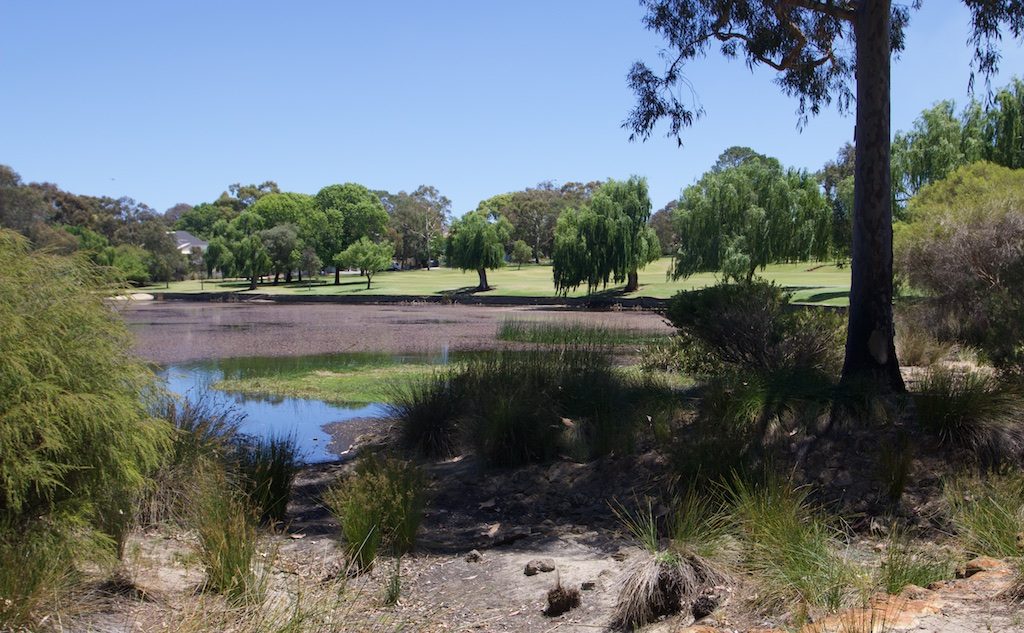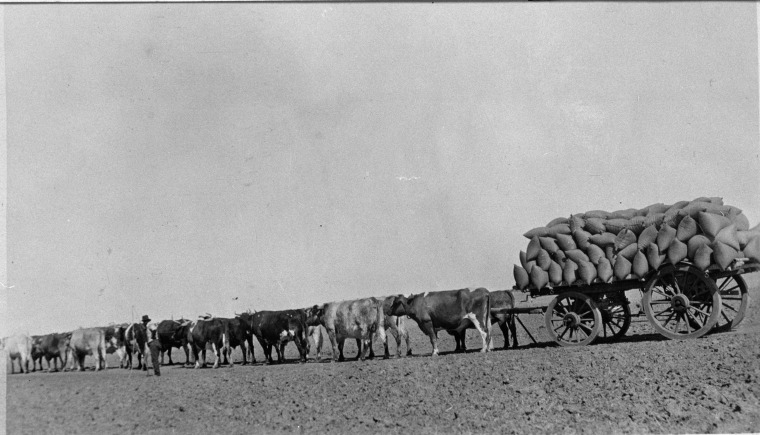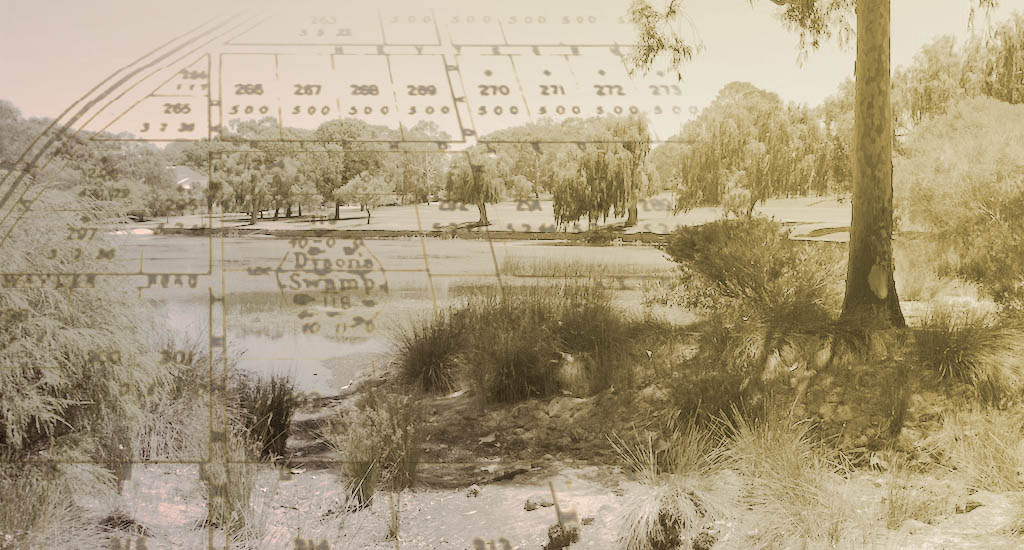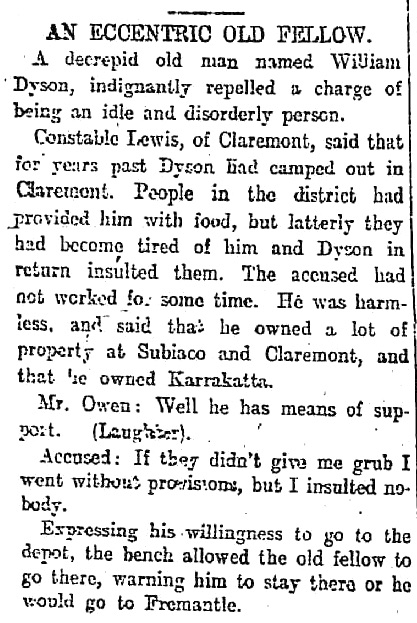Could the situation have got any more tragic for the Dyson family in the November of 1859? This is the family of James Dyson, the timber merchant of Perth, Western Australia we are talking about here, so yes it had been (and would be again).
Since the death of Dyson’s first wife, the family had actually been doing fairly well. Convicts had arrived in the Colony during 1850 and cut labourer’s wages by 60%, It was hard at first, but Dyson was now an employer himself, and by utilising both free and ticket-of-leave workers, he was soon to be counted among the largest employers of labour in the colony.
He was on the cusp of eligibility (through his growing real-estate holdings) to be selected as a juror, and hence, eligible to stand for public office. Having £150 in assets was the measure of tangible respectability for a man who was was yet to marry his future second wife, although they already had seven children together (including two from her previous marriage and three from his). They were counting down the days until her first husband could be declared legally dead. Dyson clashed in court with the Perth Town Trust over the right to collect timber on the Trust’s land, but soon he would be eligible not only to vote for councillors to that body, but be a councillor himself.
He had three sons on the cusp of manhood. William, the youngest surviving child by his first marriage was then twelve, and might have been a bit of a concern. He did not seem to have the academic nous of the next, Joseph, then fourteen, who was one of the first students to attend the state-run Perth Boy’s school in St George’s Terrace (when it was opened in 1854).

This is speculation based on the abject lack of any future positive mark William has left to posterity. There is a mention in 1887 that he may not have been able to hold his liquor (thus marking him out as a true Dyson), then there are a number of traffic offences (involving horses). One of these includes a fine for mistreating a horse, which leaves me unable to summon any affection for him whatsoever. William’s ending was sad. He did not seem able to function outside the family umbrella, so by the beginning of the 20th Century when the family of James Dyson had well and truly disintegrated, he was reduced to the situation of being a mad old bastard ranting about the extent of his family’s fortune back in the good old days.
The “Fremantle” they threatened him with was, of course, the insane asylum. The Old Men’s Depôt had not long been moved from it’s uncomfortably public location at the foot of Mt Eliza to a less confronting locale conveniently situated in Claremont. William was only 54 years old at the time. He lived the rest of his life in the Claremont Retreat, later known as Sunset Hospital, where he died, totally forgotten, in June 1915. He was buried in an unmarked grave in the cemetery at Karrakatta. He had outlived all his immediate family.
The Dysons had famously owned property in the Subiaco-Claremont area. In 1858 James purchased a wetland lake from George Shenton, senior. Apart from being one of the most influential merchants and financiers in the Colony, Shenton was also the chairman of the Perth Town Trust, yet despite that, seemed to hold Dyson in some high regard. Many years later, Dyson was compelled to sell the lake back to Shenton’s son, George, junior. The area around the lake was a significant camping ground for the Noongar inhabitants near Perth. Their name for the wetland area was Julabup, but from the time of Dyson’s possession of a British title deed, it became known as Dyson’s Swamp.
There are no records of Dyson’s interactions with the aboriginal custodians of his property, so I remain cautiously hopeful relations were good. Julabup is now formally returned to its original label as Lake Julabup after a long stretch when it was known as Shenton Lake. But it will always be Dyson’s Swamp to me.

Dyson had been expanding from his original business as a timber cutter, to being a building contractor, market gardener, baker, butcher, brick-maker and general dealer. Not that he personally did any of these things—that was what convicts and family members were for. Dyson’s swamp was a key asset. The Perth city herd of cattle was marshalled just outside the north of the city. In theory the abbatoirs were supposed to be on the eastern edge of town, by the Claise Brook—In practice, butchers plied their trade wherever they had their premises. Dyson’s Perth city dwelling and butchery was on the corner of William and King Streets. This was the first Dyson’s Corner. Dyson’s swamp was a convenient watering area for the herd near the town, as such, it was quite a lucrative piece of real estate. No doubt it was also a useful source of timber that he could legally exploit. His eldest son might well have been carting timber on the bullock cart when James Dyson’s world fell apart.
George Dyson might not have had the formal education of his younger brother, but he was described as sharp, active and industrious when aged nearly sixteen. It is not hard to imagine that he was his father’s pride and joy. Two months after his death, his desolate father was drinking himself into insensibility. It was a uniquely nineteenth century traffic accident. The bullocks pulling the cart had swerved suddenly and crushed the young lad between the wheels of the cart and a tree. He died a short time later. The accident certainly took place on the path to Dyson’s Swamp.

The grave site of George Dyson is lost. If George had lived, the fortunes of the Dyson clan might have been very different. But George was gone. His place as James’s heir was inherited, somewhat awkwardly, by James Dyson’s second son. This is where Joseph Dyson the Elder’s story really begins.



